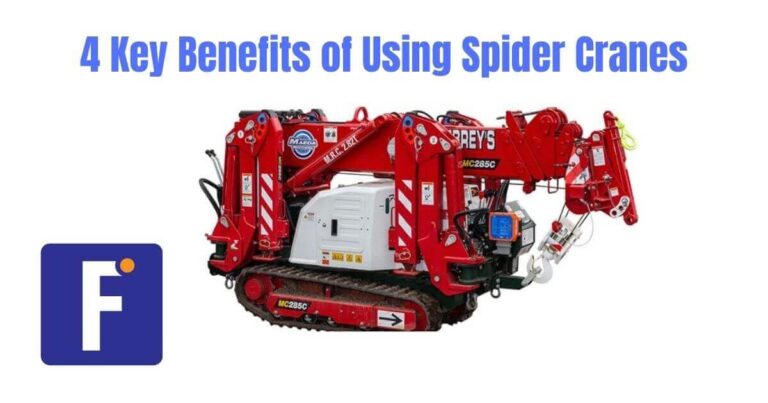In today’s world where populations are growing and cities expanding, the construction industry has become a core trade. City areas are becoming congested, meaning there is often limited space to work with. This makes it trickier to build and do general maintenance on already existing projects. In this read, we discuss the benefits of the Spider Cranes.
That is why construction companies – both private and commercial – need to utilise the right tools and equipment to accomplish jobs. Whether you’re building, doing maintenance at high places, or doing groundwork and landscaping, there are some jobs people can’t do by themselves. You need machines! Luckily, with services like mobile crane hire Melbourne construction companies have been expertly completing their projects.
Building projects are highly labour-intensive, meaning you’ll need a lot of manpower and skills to complete some of the most specialised jobs. However, vehicles such as cranes are essential for doing the heavy lifting, ascending to excessive heights, and digging in hard terrains.
More specifically, spider cranes have become an innovation in this space, because they carry an array of unique benefits.
Lifting Specialties
Apart from cities expanding so much horizontally, they often begin to grow vertically! Being able to reach high places in confined areas has now become a priority for maintenance companies. And spider cranes probably have the most advanced lifting solutions compared to its other crane counterparts.
They’re neat, compact and have exceptional manoeuvrability. A spider crane generally has four legs that can lift your platform to varying heights. Their legs can bend, fold, and expand as needed, depending on what sort of terrain you’re working on. And because they can regulate your height smoothly, they can also be flexible and safe to use in smaller spaces.
Outrigger Solutions
What makes spider cranes even more useful is that they can operate and work on rough terrains that have varying gradients. The crane is built with exceptional outrigger solutions – which means each leg can extend at different lengths beyond the platform – that allow you to work on different slopes and gradients.
Imagine for example, your spider crane’s two back legs extend less than the two front legs. This is appropriate when it’s standing on a steep gradient. A conventional crane would not be able to achieve this, since they can only operate on mostly flat surfaces.
This feature is important in projects where you need to be lifted to heights at an even level, but where the terrain is uneven.
These outrigger features are also vital if your terrain is rough. Some flat spaces can still be rough, treacherous, and rocky. The flexibility and manoeuvrability of the legs on the spider crane allows the crane to ‘step over’ or move around rough obstacles and objects.
Many surfaces can be unpredictable – even in the cities – but you can always be prepared with a spider crane.
Flexibility
In certain congested areas, you might often be tasked to work in some of the most compact environments. As already mentioned, spider cranes are highly flexible, but what makes this feature immensely special is that they can operate in very confined spaces.
In fact, these cranes are so flexible and compact, that the smaller versions can even fit through doorways and indoor environments. This makes them rather advantageous over traditional cranes, because they can get a lot closer to the more awkward places that need your attention. This, and the ability to reach a wide range of heights, make a spider crane very useful.
Safety
Spider cranes have specialised safety features designed to maximise your safety, especially when working at irregular heights. Its outrigger solutions mentioned above have a central interlock feature, which would prevent the crane from tipping or swaying when situated on uneven surfaces.
This interlocking specification will stabilise the platform before any lifting commences. There is also a limit indicator that will alert you when the crane has reached its maximum lifting capacity. To ensure the crane won’t get damaged and to ensure your safety, this is an important feature.
The spider crane may be flexible, but it does have an area limitation. A work area limitation is a feature on the crane that will specify the range within which you can work. Stability warning lights and warning alarms are built into these cranes to warn you against other hazards, such as the crane tipping. That is especially important on jagged gradients and improves safety on work sites.
In addition, these cranes are secure and contain steady railings, barriers and overhead coverings that can protect you against harsh weather or falling objects or debris.
Final Words
The modern approach to construction practices can save you time and money – simply because you have less preparation work to do.
If you’re working in the construction, maintenance or landscaping industries, never hesitate to contact your nearest vendor for spider crane hire to benefit from the potential of these useful contraptions.
